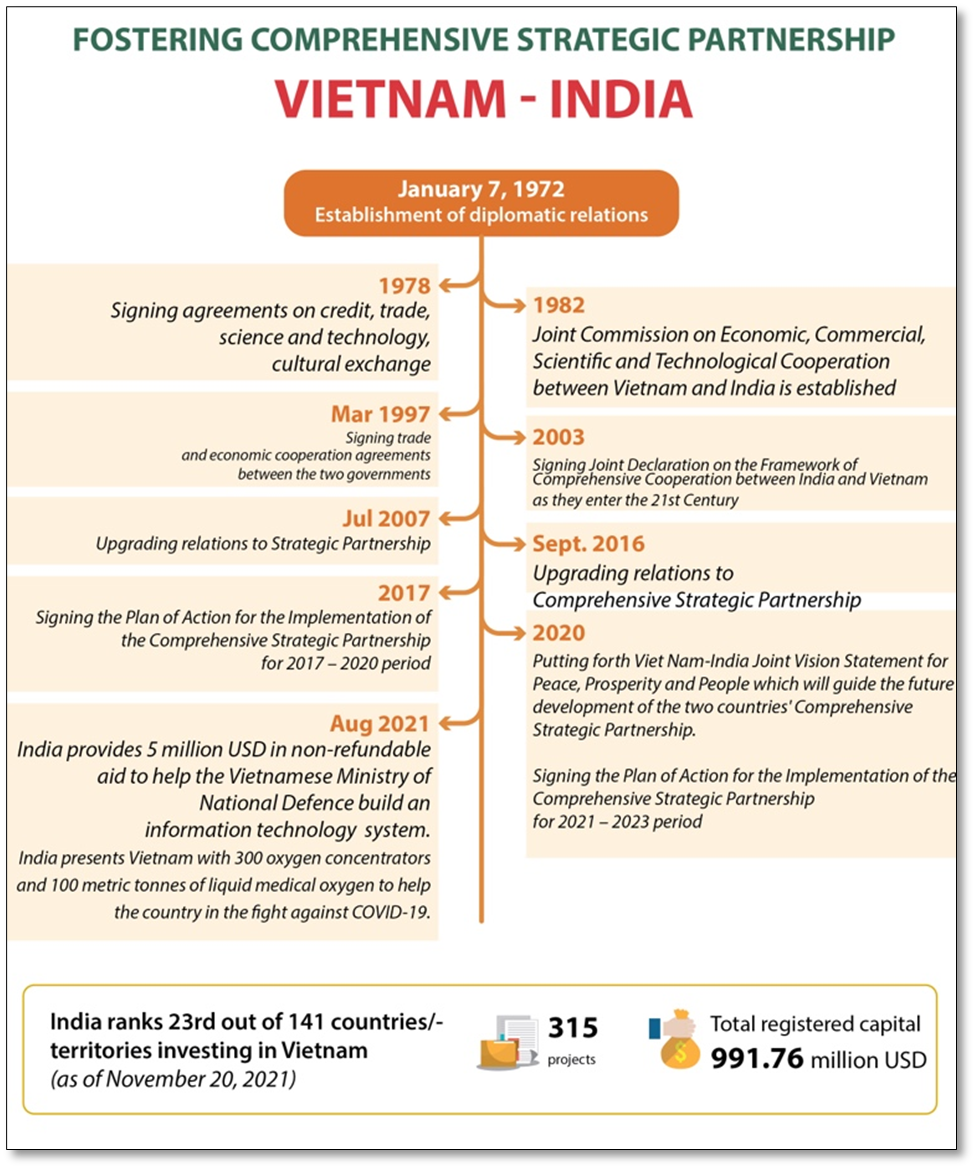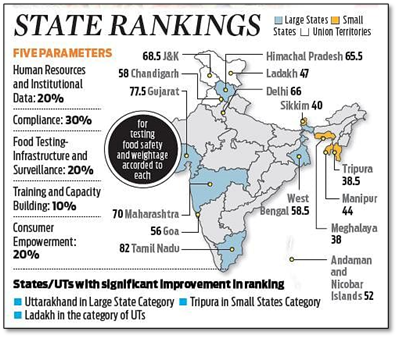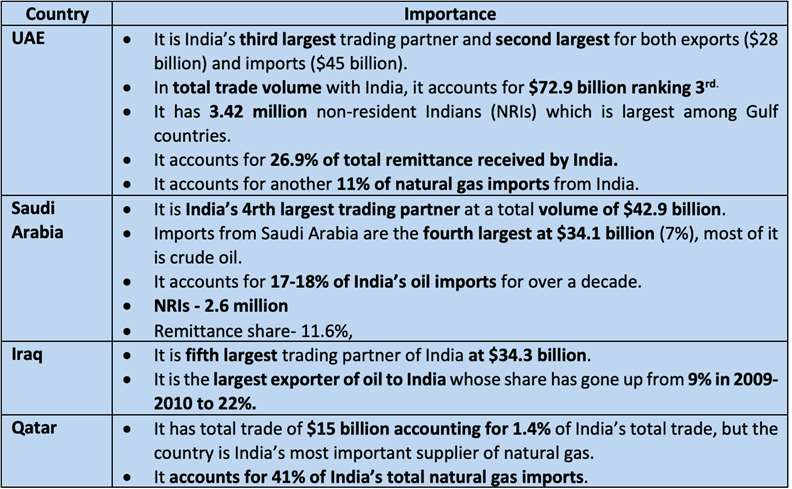Monday, 13th June 2022
SDG Index Report 2022 - Edukemy Current Affairs
In News
The SDG Index Report 2022 was recently released.
Findings on India
- In the 2022 Global Index of SDGs, India ranked 121 out of the 163 countries. It had ranked 117 in 2020 and 120 in 2021. India’s preparedness has worsened over the years in comparison with other countries.
- The country continues to face major challenges in achieving 11 of the 17 SDGs, which has pushed down its global ranking on SDG preparedness.
- The progress in around 10 of these goals is similar to those in 2021. These include SDG 2 on ending hunger, SDG 3 on good health and well-being and SDG 6 on clean water and sanitation.
- But ensuring decent work (SDG 8) has become more challenging.
- India is on track to achieving SDG 13 on climate action.
- SDGs are not mentioned in the latest central or federal budget documents of India.
- Based on NITI Aayog’s index on SDGs, the decline in India’s overall performance is primarily due to eight states — Bihar, Telangana, Rajasthan, Uttar Pradesh, Karnataka, Andhra Pradesh, Punjab, and Jharkhand — whose scores have dipped under SDG 13 in the two years.
Major Highlights of the Report
- The SDGs are not being achieved. Success is held back by severe financing constraints facing the developing countries: constraints that have been gravely aggravated by the COVID-19 pandemic and the war in Ukraine.
- For the second year in a row, the world is no longer making progress on the SDGs. The average SDG Index score slightly declined in 2021, partly due to slow or non-existent recovery in poor and vulnerable countries. Multiple and overlapping health and security crises have led to a reversal in SDG progress.
- Performance on SDG 1 (No Poverty) and SDG 8 (Decent Work and Economic Growth) remains below pre-pandemic levels in many low-income countries (LICs) and lower-middle-income countries (LMICs).
- This is a major setback, especially considering that before the pandemic, over the period 2015–2019, the world was progressing on the SDGs at a rate of 0.5 points per year (which was also too slow to reach the 2030 deadline), with poorer countries making greater gains than rich countries.
- At mid-point on the way to 2030, policy efforts and commitments supporting the SDGs vary significantly across countries, including among G20 countries. Progress on climate and biodiversity goals is also too slow, especially in rich countries.
- Rich countries generate negative international spillovers notably through unsustainable consumption; Europe is taking actions. The 2022 SDG Index is topped by three Nordic countries – Finland, Denmark and Sweden – and all top 10 countries are European countries. Yet even these countries face major challenges in achieving several SDGs.
- The 2022 International Spillover Index included underlines how rich countries, generate negative socioeconomic and environmental spillovers, including through unsustainable trade and supply chains.
- The COVID-19 pandemic forced data providers to innovate and build new forms of partnerships; these should be leveraged and scaled up to promote SDG impacts by 2030 and beyond.
About the report
- It is published by a group of independent experts at the Sustainable Development Solutions Network (SDSN).
- Since 2015, the report has been tracking and ranking the performance of 163 UN member states on SDGs.
- The 2030 Agenda for Sustainable Development, adopted by all United Nations Member States in 2015, provides a shared blueprint for peace and prosperity for people and the planet, now and into the future.
Way Forward
Achieving the SDGs is fundamentally an investment agenda in physical infrastructure (including renewable energy) and human capital. The incremental public financing required can be mobilized in six major ways:
- Increased domestic tax revenues.
- Increased sovereign (government) borrowing from international development finance institutions (DFIs).
- Increased sovereign borrowing from inter- national private capital markets
- Increased official development assistance (ODA)
- Increased funding by private foundations and philanthropies.
- Debt restructuring for heavily indebted borrowers, mainly to lengthen maturities and reduce interest rates.
Sources:
Cheetah Reintroduction in India
In News
The Union Environment Ministry has recently said that India is set to bring cheetahs from South Africa to Madhya Pradesh’s Kuno-Palpur National Park by August this year.
About the News
- A 10 sq km enclosure has been readied in the national park and would soon house at least 6 cheetahs.
- Alongside, a plan is underway to introduce 8-10 cheetahs every year.
History of Cheetah endangerment in India:
- Activity for Royalty:
- For centuries, hunting was a favoured activity for royalty in India.
- The cheetah, which was relatively easy to tame and less dangerous than tigers, was frequently used by Indian nobility for sport-hunting.
- Records of Hunting:
- The 12th century Sanskrit text Manasollasa, by the Kalyani Chalukya ruler, Someshvara III has records of cheetah coursing, or the use of trained cheetahs for hunting.
- This had become a highly specialized activity in the medieval period and was carried out on a large scale during the Mughal empire.
- Resulting Decline of Population:
- The capture of wild cheetahs for hunting and the difficulty to breed them in captivity was leading to a decline in the cheetah population.
- Status under the British Raj:
- Unlike the Mughals, the British were not very interested in coursing with the cheetahs. Rather, they preferred to hunt big game, such as tigers, bison and elephants.
- The British extensively had cleared the forests, so as to develop settlements and to set up indigo, tea and coffee plantations that further resulted in the loss of habitat for big cats, contributing to their decline.
- Eventually, cheetahs were considered as “vermin” and also distributed monetary rewards for the killing of cheetahs. As a result, wild cheetahs became very rare in India by the 20th century.
- International trade of cheetahs:
- Unlike the British, Indian elites and rulers of princely states continued the old practice of hunting with cheetahs in the 1920s that resulted in their decline in the wild.
- However, certain princely states like Bhavnagar and Kolhapur were the leading importers of cheetahs between 1918-1939.
- Cheetahs continued to be imported to independent India in small numbers, especially for exhibitions in zoos.
- Cheetah Reintroduction Action Plan:
- Currently, India is set to bring cheetahs from South Africa to Madhya Pradesh which is suggested to be the first trans-continental shifting of a large carnivorous animal to India.
- Several sites were chosen, of which Kuno-Palpur National Park, located in Chambal Valley, Madhya Pradesh was seen as the most suitable as the area had a large conducive habitat area available.
- This is based on the Supreme Court’s order, 2021 to introduce African Cheetahs in a “carefully chosen location” on an experimental basis.
Source:
- Explained: How cheetahs went extinct in India, and the plan to reintroduce them into the wild
- Extinct in India, cheetahs set to be reintroduced from South Africa by August
Image source:
BrahMos supersonic cruise missile
In News
The BrahMos supersonic cruise missile that has completed 21-year journey since its first testing in 2001, has recently bagged an export order from the Philippines.
Background and development of the Missile
- Since the early 1980s, the Integrated Guided Missile Development Programme, conceived and led by Dr A P J Abdul Kalam, started developing a range of missiles including Prithvi, Agni, Trishul, Akash and Nag, with a wide spectrum of capabilities and ranges.
- In the early 1990s, India’s strategic leadership felt the need for cruise missiles primarily following the use of cruise missiles in the Gulf War.
- Cruise missiles are guided missiles that traverse the majority of their flight path at almost constant speed and deliver large warheads over long distances with high precision.
- An Inter-Governmental Agreement was signed in 1998 with Russia that led to the formation of BrahMos Aerospace, a joint venture between DRDO and NPO Mashinostroyenia (NPOM), the Indian side holding 50.5% and the Russians 49.5%.
- The first successful test of the missile was conducted in in 2001 from a specially designed land-based launcher.
The BrahMos Missile:
- BrahMos is atwo-stage (solid propellant engine in the first stage and liquid ramjet in second) missile, named after the rivers Brahmaputra and Moskva.
- It is a multiplatform missilee., it can be launched fromland, air, sea, and from submarine and multi capability missile with pinpoint accuracy that works in both day and night irrespective of the weather conditions.
- It operates on the "Fire and Forgets" principlee., it does not require further guidance after launch.
- It is one of the fastest cruise missiles currently operationally deployed with speed of Mach 2.8, which is nearly 3 times more than the speed of sound.
- Following India’s entry into the MTCR (Missile Technology Control Regime) club in June 2016,the range of the missile is planned to be extended from 290km with which it was initially developed to 450 km and to 600km at a later stage.
- MTCR is an informal, voluntary and non-legally binding partnership among 35 countries to prevent the proliferation of missile and unmanned aerial vehicle technology capable of carrying greater than 500 kg payload for more than 300 km.
Source:
- Explained: BrahMos, 21 and developing
- BrahMos supersonic cruise missile, with enhanced capability, successfully test-fired off Odisha coast
Image source:
The National - Edukemy Current Affairs
On June 13, 1991, the National Sports Daily stopped its publication. The National Sports Daily, or The National, was a sports newspaper in the United States which debuted January 31, 1990 and folded on June 13, 1991. The newspaper was published daily (Sundays through Fridays) and had a tabloid format. The money man behind The National was the late Mexican billionaire Emilio Azcarraga. The National hired an All-Star cast of sport-specific writers.
Sources:
IN-SPACe - Edukemy Current Affairs
- Context: The Prime Minister of India recently inaugurated the headquarters of the Indian National Space Promotion and Authorisation Centre (IN-SPACe) at Bopal, Ahmedabad.
- The union Cabinet headed by the Prime Minister approved the establishment of In-Space in June 2020.
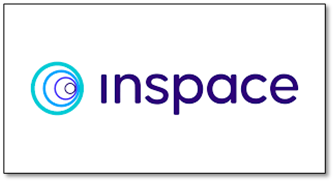
- A part of Indian Space Research Organization (ISRO), the new space centre will pave the way for space exploration for private players in space sector.
- IN-SPACe will be the single-window autonomous nodal agency to enhance participation of private companies in activities related to space science.
- IN-SPACe will take care of the needs and demands of private players, including educational and research institutions, and explore ways to accommodate these requirements in consultation with ISRO.
- Existing ISRO infrastructure is planned to be made accessible to interested individuals to enable them to carry out their space-related activities.
- According to estimates, the global space economy is worth USD 400 billion and is expected to expand up to USD 1 trillion by 2040. India’s share is only 2% and this is expected to go up in near future with increase in private participation.
Source:
Nanhi Pari Programme - Edukemy Current Affairs
- Context: The ‘Nanhi Pari’ programme was recently launched by the Northwest Delhi district administration.
- 'Nanhi Pari' is a scheme to provide a one-stop solution to parents, eliminating their need to visit various offices to obtain documents.
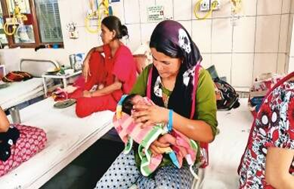
- The programme aims to complete essential services such as provision of a birth certificate, Aadhaar card registration, and opening a bank account for girls delivered in government hospitals in the district before mother and baby are discharged.
- It aims to get registration for schemes for girl children and motherssuch as the Sukanya Samriddhi Account Scheme, the Ladli scheme, and Pradhan Mantri Matru Vandana Yojana done at the hospital itself.
- Apart from ensuring that schemes reach target beneficiaries and protecting the interests of girl children, the programme also aims to promote Institutional Deliveries.
- This will reduce the maternal mortality rate and infant mortality rate.
Source:
Image source:
Organisation of Islamic Cooperation
- Context: The Organisation of Islamic Cooperation (OIC) has recently condemned and denounced the comments on Prophet Muhammed made by two Indians.
- The OIC is the second largest inter-governmental organisation after the United Nations, with the membership of 57 states, covering four continents.
- It was established at a 1969 summit in Rabat (Morocco) after what it describes as the ‘criminal arson’ of Al-Aqsa Mosque in Jerusalem.
- It is the “collective voice of the Muslim world” to ensure and safeguard their interest on economic socio and political areas.
- It is Headquartered in Jeddah, Kingdom of Saudi Arabia.
- The organisation adheres to a charter that lays out its objectives, principles and operating mechanism.
- The charter enshrines thatall members be guided and inspired by the noble Islamic teachings and values alongside committing themselves to the purposes and principles of the U.N charter.
- India is not a Member of OIC.
Source:
Image source:
The Sant Tukaram temple - Edukemy Current Affairs
- Context: The Prime Minister will be inaugurating the Sant Tukaram Shila Mandir in the temple town of Dehu in Pune district.
- “Shila” refers to a rock that is currently on the Dehu Sansthan temple premises. It has been the starting point of Wari pilgrimage for centuries and is pious for the Warkari sect.
- Bhakti saint Sant Tukaram is believed to have sat on this piece of rock for 13 continuous days when challenged about the authenticity of the Abhyangs he had written.
- Sant Tukaram Maharaj was a 17th-century Bhakti saint and Marathi poet from Maharashtra.
- Tukaram is best known for his devotional poetry called Abhanga and community-oriented worship with spiritual songs known as kirtans.
- His work is central to the Warkari sect spread across Maharashtra. He is also credited with starting the Wari pilgrimage.
- His message about a casteless society and his denial of rituals had led to a social movement.
Source:
- Explained: The Sant Tukaram temple and its significance
- Sant Tukaram temple in Dehu to be closed for one day instead of three ahead of PM Modi's visit
Image source:
NSS, CMIE Surveys: Not Comparable; Caution Advised
Essence: Lack of data or the incomplete nature of it is creating problems in evidence-based decision making and is also leading to deriving of sensational estimates by different organizations.
Recently both the IMF and World Bank came up with poverty ratios but while relying on different data sets and varying assumptions. This makes these estimates incomparable and adds to already present confusion in the already complicated measurement issues of poverty in India.
While the IMF relied on private final consumption expenditure from the National Accounts Statistics, the World Bank used CMIE data from the consumer pyramid's household survey. According to the authors, the World Bank paper is not trustworthy because of the unrealistic nature of assumptions used.
Sampling methods of two estimates are different and representativeness of their data is also doubtful. While NSS bases its estimate on information on 345 unique items, CMIE does so through 114 items. Recall periods used in both data sets are also different, rendering them incomparable.NSS survey used by IMF is for the year 2011, and the CMIE survey used by WN is from 2015 to 2019. This has introduced another element of difference.
Apart from these issues related to different available estimates, the utility of measurement of poverty at the national level has little utility. Poverty data from state, district, block and village level will give more actionable data. Already available estimates of multidimensional poverty and initiatives like the aspirational districts programme which is being extended to the block level is a much useful tool India has in targeting poverty.
Why should you read this article?
- To understand the difficulty in using two different estimates of poverty released by the IMF and World Bank.
Source:
India's EPI 2022: Climate Debate Muddled
Essence: The 2022 Environmental Performance Index (EPI) released on World Environment Day (June 5) has triggered much consternation in India, as the country is ranked last (180th).
The authors are of the view that such indexes can have some inherent problems. In trying to quantify, aggregate and rank, index makers have to make judgements about what issues count, how they are best measured individually, and how much importance to give to each issue and indicator in aggregating. Moreover, when ranking countries, one is essentially applying the same standard across vastly different socio-ecological contexts – this involves difficult choices. This approach is contrary to widely accepted ethical principles, especially the global political agreement on common-but-differentiated-responsibility (CBDR).
Climate change is a global environmental problem, and because its effects depend on the accumulation of greenhouse gases over time, measuring progress in a given country is challenging. Unlike air quality, where absolute increases or decreases in emissions of air pollutants in that country signal progress, climate change mitigation has to be measured against what it is reasonable and fair to expect from different countries, taking into account their past emissions as well as national contexts.
As per the authors, through choices of biased and skewed benchmarks, it also hurts honest global conversation and much-needed progress on the global climate crisis that it purports to foreground.
Why should you read this article?
- To understand the flaws in international indices like Environmental Performance Index
Sources:
Electric Bull - Edukemy Current Affairs
Background
- Indian farmers struggle to reap better yields due to lack or little mechanization. The community continues to depend on cattle and labour for farm work.
- An engineer couple vowed to resolve their village’s farming woes with an ‘Electric Bull’.
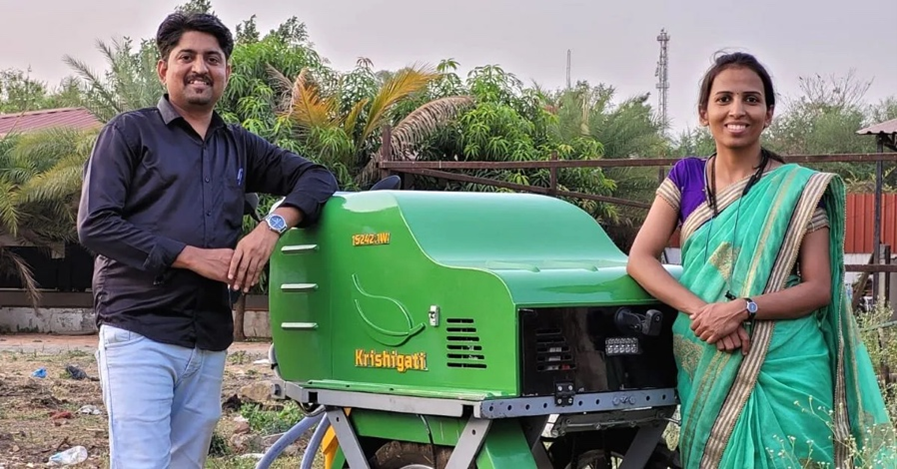
About the Electric Bull
- The Engineer couple, Tukaram Sonawane and Sonali Veljali, recognized the vicious cycle of poverty and poor yield. The processes of ploughing, tilling, sowing, and spraying insecticides usually take place manually, with the help of labourers.
- Moreover, there is a constant shortage of bullocks as they are expensive to maintain, and farmers tend to share resources. A delay in any of the processes by even a week directly affects the harvest time, resulting in poor sales. If they sell their produce a week later, they do not fetch good profits.
- As a solution to this problem, the couple has built an innovative ‘Electric Bull’, which holds big promises to help farmers, especially those with fewer land holdings. It performs all the processes at 1/10th of the cost.
- There are some procedures that only a bull can perform, as the tractor is too big for the task. For example, bulls can serve the purpose of sowing seeds, as the distance between the plantations can be minimised. But using a tractor reduces the sowing area.
- Once fully charged, the vehicle functions for four hours.
Sources:
Share the article
Get Latest Updates on Offers, Event dates, and free Mentorship sessions.

Get in touch with our Expert Academic Counsellors 👋
FAQs
UPSC Daily Current Affairs focuses on learning current events on a daily basis. An aspirant needs to study regular and updated information about current events, news, and relevant topics that are important for UPSC aspirants. It covers national and international affairs, government policies, socio-economic issues, science and technology advancements, and more.
UPSC Daily Current Affairs provides aspirants with a concise and comprehensive overview of the latest happenings and developments across various fields. It helps aspirants stay updated with current affairs and provides them with valuable insights and analysis, which are essential for answering questions in the UPSC examinations. It enhances their knowledge, analytical skills, and ability to connect current affairs with the UPSC syllabus.
UPSC Daily Current Affairs covers a wide range of topics, including politics, economics, science and technology, environment, social issues, governance, international relations, and more. It offers news summaries, in-depth analyses, editorials, opinion pieces, and relevant study materials. It also provides practice questions and quizzes to help aspirants test their understanding of current affairs.
Edukemy's UPSC Daily Current Affairs can be accessed through:
- UPSC Daily Current Affairs can be accessed through Current Affairs tab at the top of the Main Page of Edukemy.
- Edukemy Mobile app: The Daily Current Affairs can also be access through Edukemy Mobile App.
- Social media: Follow Edukemy’s official social media accounts or pages that provide UPSC Daily Current Affairs updates, including Facebook, Twitter, or Telegram channels.

